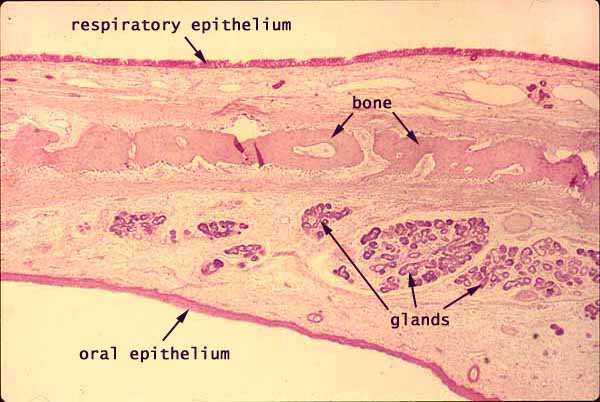

Hard palate, epithelium and connective tissue

The upper surface of the hard palate faces the nasal cavity and is lined by pseudostratified columnar epithelium.
This type of epithelium characterizes the upper respiratory tract, including the mucosa of the trachea as well as the nasal cavity.
(Pseudostratified epithelium consists of both short and tall cells, all resting on the basement membrane.)
- Most of the tall (columnar) cells are ciliated, a specialization that allows dust and mucous to be swept upward and eliminated.
- Mucus-secreting goblet cells are not apparent in this image.
- See an example of inflammatory infiltrate in nasal mucosa, at Webpath.
The lower surface of the hard palate faces the oral cavity and is lined by stratified squamous epithelium. This type of epithelium characterizes the upper gastrointestinal tract, including the mucosa of the esophagus as well as the oral cavity.
- The mucosa of the palate includes salivary glands.
Between the nasal and oral mucosae of the palate is bone.
Comments and questions: dgking@siu.edu
SIUC / School
of Medicine / Anatomy / David
King
https://histology.siu.edu/intro/CR001b.htm
Last updated: 26 May 2022 / dgk